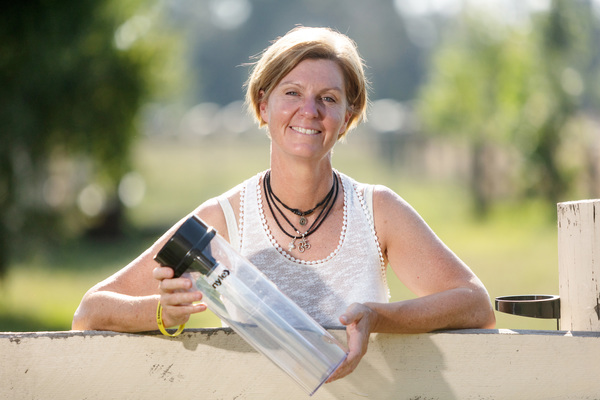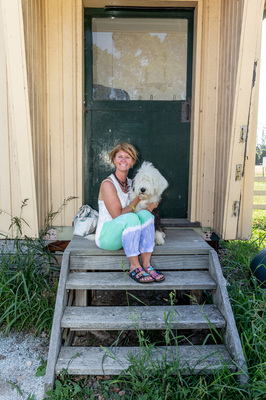By Kyra Gillespie
Tina Moonen opens the door to her Labertouche home with a large, warm smile. She is standing exactly where her last house burnt to the ground on Black Saturday ten years ago.
“I can remember when that [wind] change came through; it was just howling with wind and then the wind stopped. And it was just very, very quiet. The smoke was so thick you couldn’t see your hand in front of you. Then all of a sudden it lifted and there was just a wall of fire,” she recalled.Tina is one of 24 who lost their homes as a result of the Bunyip State Forest fire on Saturday 7 February 2009.
Since that day Tina and her family have been slowly rebuilding their lives.
“The process of re-building here and the kneejerk fire regulations that came in make me think that probably, if we had our time over again, I don’t know whether we would have rebuilt here. But now, ten years on, we love the place and we’re happy that we have,” she said.
“We essentially lost ten years of our working lives because of the fires. People don’t think a lot about stuff that’s not insured – like all the fences and the concrete water troughs in the paddocks – they all disintegrated. Everything melted underground, so just to get water and fences back onto the place was the best part of $100,000. And then there were the contents of the sheds that were massively under-insured as well.”
The drive to the Moonen’s Labertouche property – even ten years on – is littered with reminders of that devastating day. Charred, spindly trees across brown-dry paddocks tower black against new, green growth.
Tina and her husband Craig made the decision to stay and defend their home while their sons Brandon and Jarrod, then 11 and 14, stayed at their grandmother’s in Garfield North.
Despite having what they believed was a solid fire plan in place the Moonens were no match for the unprecedented inferno to come.
“It was a really eerie day; I don’t know whether my recollections of the whole day are accurate or not because of the way the day was. We were intensely focused on the area out the back of the house, because we thought that’s where the fire was going to come down through. And it actually was burning up towards Neerim South, then a wind change came through and it blew back straight towards us.
“I remember we had sprinklers going up on the roof and the fire plan was all happening. I wouldn’t say it’s as robust as what it is now, but we had an above ground swimming pool and we had a fire pump sitting out there ready to go, we had high pressure hoses going over the roof and everything was ready to go.
“It was an older house but it was a brick veneer and had steel frames. But it all melted and collapsed.”
The pair very nearly lost their lives.
“While we were focused on the back, what we didn’t realise was that it was coming down the road out the front. So when we decided that we were going to drive we didn’t realise that we were pretty much trapped.
“We were so lucky that we did get out. When we got down to the front of the driveway and we saw all the fire – Craig just said to me – ‘What do we do?’ And I remember saying, ‘I don’t know if this is a good idea; people die in cars driving out through fires, I don’t know if this is a good idea.’”
“He just went, I don’t know how he did it, but he drove through three kilometres of flames first – we didn’t even know if we were on the road or not – and then smoke.”
The couple were cut off from help. Tina said the CFA and DSE had moved out of the Bunyip State Forest intending to let it burn all the way down to the top of Labertouche Road because of the speed at which is was now moving.
“The smoke finally started to clear when we got out close to the service stations and then we saw it – tonnes of fire trucks out guarding the service stations because they didn’t want them to blow of course.
“Most of the resources were out there and that was hard – to see all the trucks out there. We also watched a helicopter take water from our dam and they did a load on the school – which saved the school which was great – and the other loads they dumped near the servo.
“But we were told the night before that basically if you choose to stay there wasn’t going to be, for properties, a lot of support from the CFA.”
The devastation saw the Moonens living in a school portable and using outdoor shows and toilets for two years while they rebuilt their homes.
Ten years on and the place is only just beginning to feel like home again.
Tina credits her recovery to the many people who helped her – the boys’ school St Paul’s Warragul and especially her YMCA colleagues.
“They supported me like family, they held me up.”








